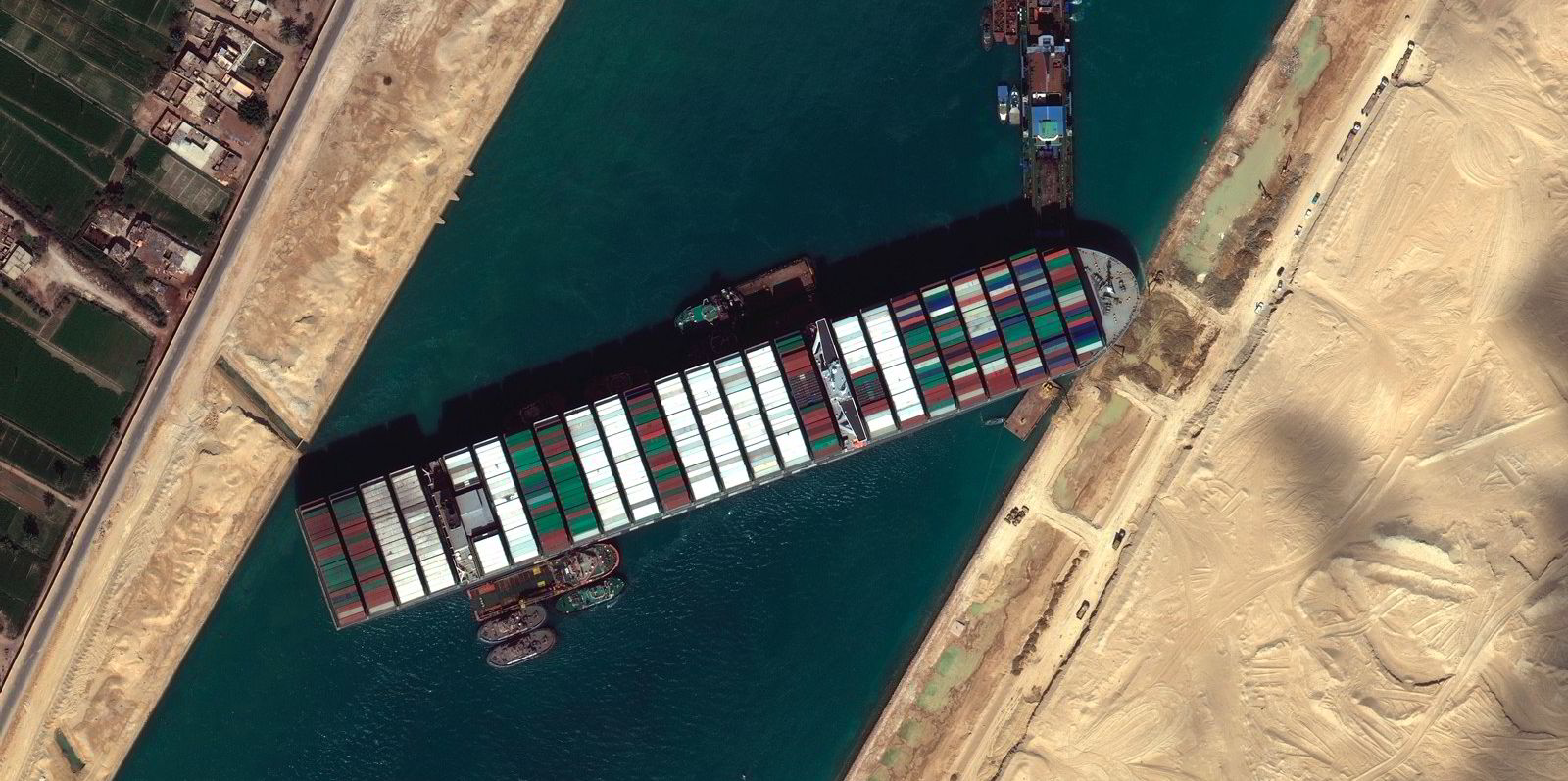Shipping loves a crisis. Disruption gets charterers and shippers jumpy. Shipowners and lines can sit back holding their hand of aces. Shipping a box tomorrow? Any ship, any price will do. Need a ship? Just take it today while you can, and do not worry about the rate.
Wedging one of the world’s biggest containerships sideways in a vital global trade artery was one Black Swan event that — unsurprisingly — few saw coming.
It is also understandable that those outside the business are tempted to view it as another example of shipping’s incompetence to manage its own affairs.
But let’s leave speculation about the incident to another day. What we can say for certain today goes far beyond the Suez saga: shipping is finally on the move.
On the move
Freight rates for many sectors are on the up, and look set to stay firm. Even those currently weak have backers betting on a rebound. Sale-and-purchase activity is roaring ahead, and newbuilding activity is accelerating.
Petter Haugen, shipping analyst at Kepler Cheuvreux, first proclaimed "shipping for win" in December 2019. The pandemic put paid to that in 2020.
In February this year, Haugen went for “shipping the win in 2021” as the dry bulk market “seems even better than we expected”. And, this time, it looks like his forecast is right. Panamaxes are trading at more than $25,000 per day, supramaxes over $22,000 per day and even capesizes are at $18,500 per day.
Dry bulk shipowner shares are up about 65% since the start of the year, according to Clarksons Platou, with the listed shipping universe up around 25% overall.
Even steely-eyed transport analyst Amit Mehrotra at Deutsche Bank was moved to state: “Shipping is back.”
His team has seen a “notable uptick in investor interest in the maritime shipping sector”, and not just in dry bulk.
Tanker recovery?
The tanker sector has also gained attention on the back of the potential for a strong recovery in oil demand as economies ease Covid-19 restrictions.
Not that the first quarter was anything less than catastrophic for the biggest crude tankers, after Opec and its allies decided not to increase oil exports as soon as many expected.
Clarksons Research said average tanker earnings in February were the lowest for more than 30 years at $5,939 per day, as crude and products volumes were down about 9% and 6% year-on-year, respectively, in the first two months of 2021.
And then there is the container sector, which even before the Suez crisis was riding a wave reminiscent of the early 2000s.
David Kerstens, a shipping analyst at Jefferies, thinks major lines will have earned more in the first quarter of 2021 than in the whole of 2020. The Suez blockage will inevitably reduce supply due to delays or longer voyages, driving box rates even higher.
Trevor Crowe of Clarksons Research sees the container market story as a clear example of the “disruption upside” sparked by the pandemic, with port congestion — and now Suez — providing additional impetus.
So what about the asset play and investment scene? The hotter S&P market seen in the last quarter of 2020 has continued this year, with prices for boxships and bulkers up about 20%.
Just over $5bn has been spent on 457 secondhand ships totalling 31m dwt — close to one-third of the total for 2020, according to Clarksons.
Deals on the rise
Again, for newbuildings, the pace is picking up, with more boxships already ordered in 2021 than in either of the past two years. Overall, prices are up about 5%, and berths for the next two years look scarce.
Rising secondhand ship values means balance sheets are strengthened, leverage comes down and finance becomes more accessible. That means companies have room to manoeuvre — and this is where things get interesting.
While the biggest issue facing shipping today is cutting carbon pollution from fuel, the key question for much of the past decade was less about finding the right technology and more about the inability to pay for it.
Steve Gordon, head of Clarksons Research, now sees energy transition issues featuring in many companies post-Covid planning, with 30% of the orderbook having alternative fuel.
“As recovery continues, some supportive impacts from disruption may ease but limited supply growth — and improvements in the wider economy — may help sustain further gains into the next phase of the cycle.”
Shipping’s win over the next few years if current markets are sustained will be a credible case to invest for the industry of the new zero-carbon age.








